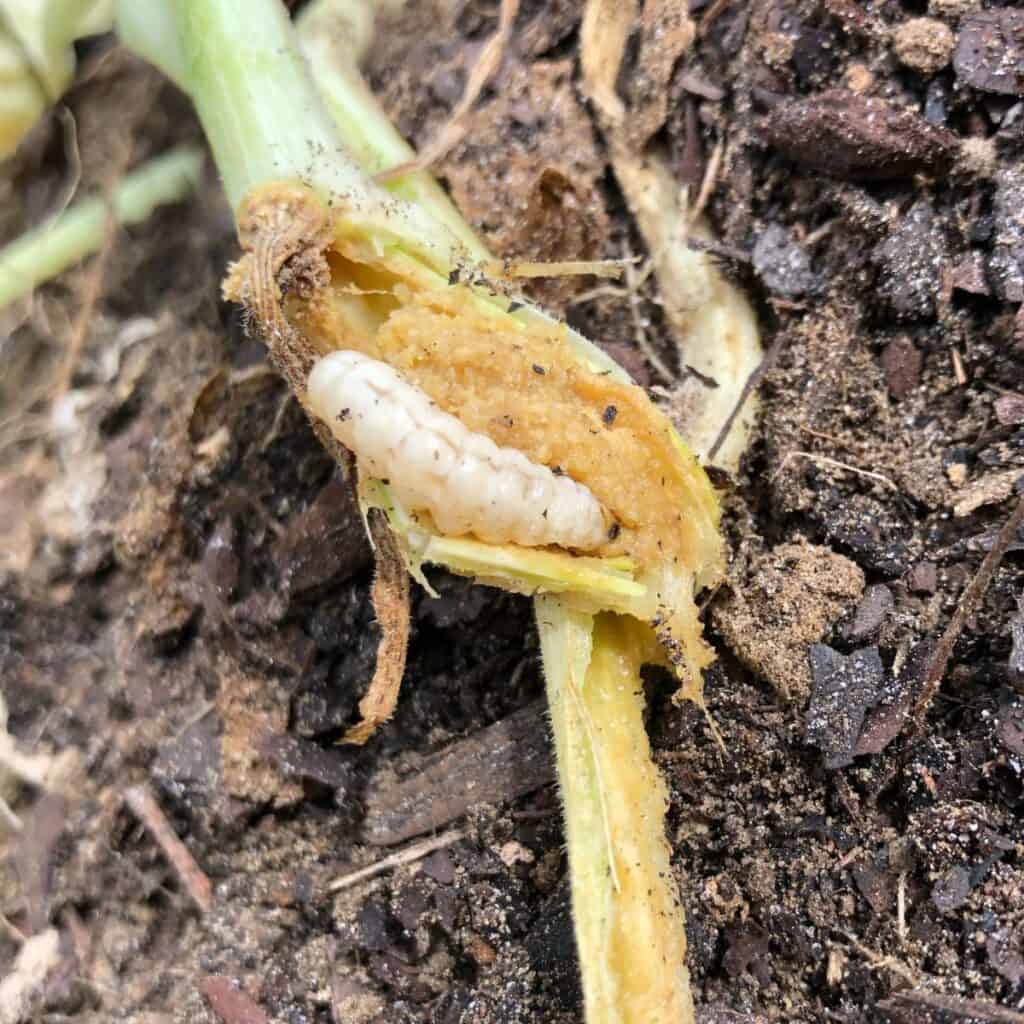There are a variety of insects that will feed on squash. One of the more troublesome is the squash vine borer. There's a good chance you've encountered squash vine borer if you've grown squash and noticed a runner or two wilting. In this article, I will share tips for managing squash vine borer in the garden.

When do squash vine borers come out
Squash vine borers will feed on both summer and winter squash and pumpkins as caterpillars. The adult moths are ⅝- to 1-inch long and colorful. Their abdomens are usually orange with black dots. Their front wings are greenish-black, while the hind wings are colorless with dark veins.
In the daytime, the adults fly around in a zig-zag pattern. From mid-June to early July, they emerge and lay eggs, primarily near the stem base, but they can also be found elsewhere.
How the squash vine borer kills plants
The larvae will bore into the stems and begin to feed. When they enter the plant, they will leave a small hole, and as they feed, they will push sawdust-like frass (insect excrement) out of the hole, accumulating over time. While the larvae are most commonly found near the base of the plant, they can be found throughout the plant.
As the caterpillars feed, they will tunnel through the stems. This will often cause the vines to wilt, especially during the heat of the day. As the larvae continue feeding, the vines eventually die. The larvae will grow to be about 1 inch and have a whitish body and brown head. After feeding for four to six weeks, they will emerge, burrow into, and eventually pupate.
Often by the time gardeners notice their damage, little if anything can be done. Fortunately, there are steps you can take to prevent them from attacking your plants and, if caught early enough, steps you can take to control them:
How to prevent squash vine borer
Covering plants with floating row covers can help keep squash vine borers off plants. If you have had trouble in the past, make sure you are growing in a different area since they overwinter in the soil. Covers will need to be removed, or plants will need to be hand-pollinated once plants begin producing female flowers.
- Some cucurbits are more susceptible to squash vine borer than others. Summer squash, zucchini, acorn squash, and Hubbard squash are some of the most susceptible.
- Scout your plants for the presence of larvae. If you notice any frass, you can cut the vine lengthwise near the entry hole and remove the larva. Once the larva is removed, cover the stem with soil.
- If you decide to apply pesticides, apply them to the plants' crowns and runners when they begin to run. Once caterpillars are inside of the plants, foliar pesticide applications won't have any effect on them.
Good Garden Sanitation
Good sanitation can help reduce squash vine borer populations. Remove the plants and shred or otherwise destroy them when your squash and pumpkins are done in the fall. This will help eliminate any larvae that may still be present in the vines.
Do you have any tips for Managing squash vine borer in the garden that I missed? Let me know in the comments section or in our private Facebook group.
More Gardening Help
If you're looking for even more detailed information, check out our gardening section of the website. If you still have questions, let me know in the comments section below or contact me in our private Facebook group.